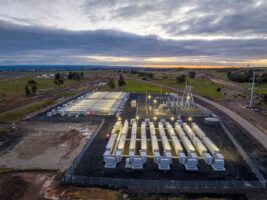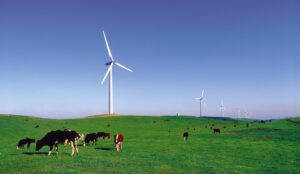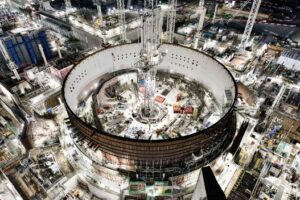NSW has raised either $22 billion or $38 billion on the sale of its electricity assets, depending on how you calculate it, but it has not reinvested a cent.
We have always supported NSW putting its electricity proceeds into transport infrastructure, but when you add Snowy Hydro in, NSW has raised $22 billion of direct cash from the sale of electricity assets and taken an additional $16 billion of debt off the NSW Government balance sheet.
So on one view that’s $38 billion of spending power freed up. Not one dollar has been put back into electricity.

Over the next 15 years most of the NSW coal power stations will close – NSW Govt. needs to publicly acknowledge this.
We’ve been through this already, but Liddell is closing in 2022 and AGL has stated that Bayswater will close in 2035. Origin Energy, a public company that does not make public statements lightly, has stated that Eraring will close by 2032 at the latest.
In our view its very likely that Vales Point B will close in the same time frame.
It’s past time the NSW Govt actually publicly acknowledges that it has heard what the owners of these stations plan and what it’s going to do about it. It’s very poor policy to bury your head in the sand and just say it won’t happen.
What does the NSW Govt think is going to happen?
Do they even think? Do the policy makers imagine that new coal stations are going to be built? That will certainly require new coal mines and the required coal price for a new mine in NSW is probably at least A$100/t pushing the electricity price right up even before the carbon risk.
Is NSW going to import even more of its power from Qld and Victoria? If so, where is the transmission planning?
Where is the extra power required to run Snowy 2.0 going to come from?
Are environmental objections to coal seam gas going to suddenly disappear?
Is an LNG import terminal going to be built in NSW?
Should NSW be the high power price State in the NEM?
Price will induce new supply but arguably not in the most efficient way
Is NSW just going to sit around and watch the wholesale price of electricity rise until it is so high that even AGL and Origin will invest?
We actually think that strategy will probably work but could easily result in under investment and will result in more NSW business closing and the uncertainty that always accompanies a lack of policy clarity and the associated price volatility.
Kick starting the $30 bn process along
NSW needs broadly 20GW of power to replace the coal fleet. At average prices that’s probably around $30 billion of nominal investment and less in NPV terms (nominal price declines and of course a lower time value of money if the investment is spread over time).
If the investment is made in a steady fashion it’s an easy job.
Let’s say it again, it’s an easy job.
If California can do it, so can NSW. What’s needed is a policy by the NSW Govt to make sure this steady investment proceeds. It doesn’t have to be a massive deal.
We argue that reverse auctions of even 500-1000 MW per year would provide enough confidence to get a steady stream of investment flowing. Its actually much better for costs to get the job done steadily rather than in a rush.

Lack of State backing for Transmission upgrades probably also hurting
It’s well know that there is a long list of projects with planning approval in NSW that are not getting built. There are two obvious reasons.
One is the lack of revenue certainty and the other one is transmission access. Both are problems the the NSW Govt. could assist with. South Australia, Victoria and Queensland are all taking steps to ensure more generation investment in their State.
Futures already show NSW falling down on the job
FY2022 NSW futures are now quoted on the ASX. Despite the advantage of cheap imported power from Qld and Victoria having to replace Hazelwood, it’s now a fact that the quoted price for power in NSW in FY22 is higher than in Victoria.
In our view this is first straw in the wind of how the lack of policy in NSW is causing trouble.
Equally you could say that the investment signal in NSW is now stronger than in Victoria for that year.

David Leitch is principal of ITK. He was formerly a Utility Analyst for leading investment banks over the past 30 years. The views expressed are his own. Please note our new section, Energy Markets, which will include analysis from Leitch on the energy markets and broader energy issues. And also note our live generation widget, and the APVI solar contribution.







